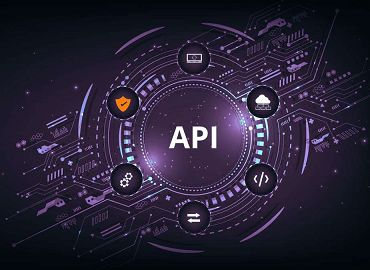Why your mobile API security strategy is failing
By Luke Fitzpatrick
API security isn’t just a backend concern anymore, it’s a frontline responsibility for every mobile developer.
According to Salt Security’s research, 99% of organizations experienced API security incidents in the past year. Yet less than 8% have what experts consider “advanced” security programs. That’s not just a gap; It’s a canyon.
As enterprises lean into mobile-first strategies, APIs have become both the backbone and the soft underbelly of digital infrastructure. They’re powering everything from banking apps to ride-sharing platforms and increasingly becoming a favorite target for attackers. But while the threat landscape keeps evolving, most API security strategies are still stuck in a deployment-first mindset.
If you’re a developer building or securing mobile APIs, here’s what you need to know and what needs to change.
The Lifecycle Gaps Developers Can’t Ignore
Most teams secure APIs only during design and deployment. But that leaves the longest stretch of an API’s lifecycle — usage, versioning, and decommissioning — dangerously exposed.
Recent studies show nearly 31% of API endpoints are “shadow APIs”, discovered only through machine learning. These are endpoints developers didn’t even know existed, and they often go unmonitored, unscanned, and unpatched. In one high-profile breach, a well-known project management tool exposed data from 15 million users via an untracked, undocumented API.
Zombie APIs — deprecated but still live endpoints — are another major blind spot. They can linger for years, bypassing standard controls and exposing sensitive data. Yet only 15% of organizations report high confidence in knowing which APIs handle personally identifiable information (PII).
If you can’t see it, you can’t secure it.
Where DevSecOps Often Breaks Down
Security and velocity shouldn’t be at odds, but too often, they are.
Nearly 73% of developers say security slows down innovation. And they’re not wrong. Manual API scanning tools typically miss dynamically generated endpoints, especially those only triggered at runtime or through specific user flows. That’s a critical flaw in CI/CD environments, particularly for mobile apps with complex networking behaviors.
To bridge this, teams need security tools that move at the speed of code. That includes:
- Automated API discovery during development and testing.
- Policy-as-code frameworks (like Open Policy Agent) to enforce rules inside CI pipelines.
- Runtime testing that simulates real-world mobile conditions (cellular, Wi-Fi, low latency).
- The goal: eliminate friction without eliminating security.
Third-Party APIs: Your Biggest Blind Spot
Most mobile apps don’t only use internal APIs; They rely heavily on third-party services for payments, messaging, analytics, and more. These integrations are often accepted with minimal scrutiny. That’s a problem.
Third-party APIs account for 35% of the most common security breaches, and 91% of organizations reported software supply chain attacks last year. Yet few developers apply the same level of testing or authentication rigor to external APIs as they do to internal ones.
Here’s what helps:
- Set standard security checklists for partner APIs (auth type, encryption, rate limits).
- Use API gateways with anomaly detection to monitor inbound/outbound traffic.
- Enforce versioning and timeout policies — even for third-party API calls.
Don’t assume external services are secure just because they’re popular.
Security Culture > Security Blame
Here’s the hard truth: the biggest problem in mobile API security isn’t developers — it’s the environment they work in.
When security feels like a blocker, teams find ways around it. That’s not negligence, it’s survival.
What works better:
- Automated security tooling that integrates into your build process.
- Security champions inside each dev squad.
- Training focused on real scenarios, not abstract checklists.
- Incentives for proactive behavior, not blame for failures.
If you want better security outcomes, invest in making security a default, not a disruption.
TL;DR — What Developers Should Do Next
API security isn’t just a backend concern anymore, it’s a frontline responsibility for every mobile developer. To secure what you build:
- Inventory all APIs, internal and external.
- Tag sensitive data flows.
- Integrate dynamic API testing into CI/CD.
- Monitor APIs post-deployment, not just pre-release.
- Kill old APIs before they come back as zombies.
Mobile APIs are the new attack surface. Securing them isn’t just about preventing breaches — it’s about building trust into the software you ship.

